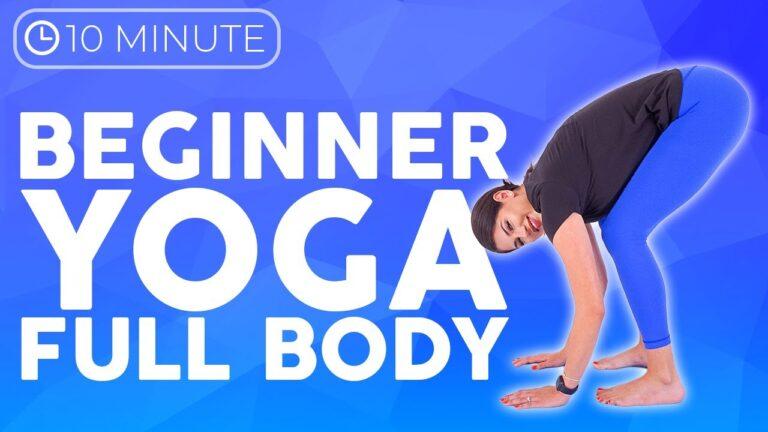Get full access to Outside Learn, our online education hub featuring in-depth yoga, fitness, & nutrition courses, when you
sign up for Outside+.
When you fall, whether it’s falling out of a pose on your mat or in daily life, quick reaction time is your key to preventing injury. You want your body to have the capacity for speed, allowing you to respond rapidly enough to catch yourself mid-fall or grab a child out of harm’s way, for example. While falling can certainly have more severe consequences later in life, at any age and activity level, the motor fitness components of balance, agility, speed, coordination, and power are vital for functional daily living and optimal for athletic performance.
The scientifically proven way to build balance
When we think about balance, we often envision holding a picturesque Half Moon or Tree Pose, but falls don’t usually happen when you are standing still or in a steady state or pose, but rather when you are moving, transitioning, or adjusting. The key to building balance, coordination, and preventing injury from falling as we age is in mastering transitions and developing power.
In partnership with the University of Miami, we have studied the muscle utilization patterns of different yoga poses. We learned which muscles are actually being used and how active they are during each pose. For example, in electromyography (EMG) study, which records electrical activity produced by skeletal muscles, the more activated the toes in standing poses, the greater the lower leg muscle activity, therefore targeting the primary balance muscles. As a result of this kind of data and innovation, we created a sequence scientifically proven to increase balance and prevent falls.
The following sequence is comprised of three mini flows, adapted from our research and designed to enhance balance, motor skills, and functional living by rewiring the usual patterns of your brain. The poses in this sequence require focus and are sequenced in a unique neuromuscular pattern to challenge your musculoskeletal system.
15 poses proven to build better balance
To begin, move with awareness through the transitions. Once you’ve mastered the sequence, you can add speed into your practice, building your capacity to react quickly.
Tadasana-Utkatasana-Vrksasana (Mountain Pose-Chair Pose-Tree Pose) Flow
Repeat this flow 6 times total, 3 times per side for Tree Pose. For the first 2 rounds, hold each pose for 5 breaths, then move through rounds 3–6 at 1 breath per pose.
Tadasana (Mountain Pose)
Begin with your feet parallel. Lift and spread your toes to activate the muscles in your lower legs. Create a slight bend in your knees and engage your quadriceps. Contract your lower abdominal muscle to level your pelvis and your upper abdominal muscle to draw your ribs in. Lengthen your side waist and draw your upper arm bones back.
Note: All of the alignment principles and muscle activation cues in Mountain Pose can be integrated into every pose in this sequence.
Utkatasana (Chair Pose)
From Mountain Pose, bend your knees to 90 degrees over your ankles, and keep weight equally distributed on your feet. Engage your lower abdominal muscles, as you reach your arms up and pull your arm bones back.
Vrksasana (Tree Pose)
From Chair Pose, move into Tree Pose on the right side. Alternate sides as you repeat rounds.
Utthita Hasta Padangusthasana-Crescent Lunge-Garudasana (Extended Hand-To-Big-Toe Pose-Crescent Lunge-Eagle Pose) Flow
Repeat this flow 3 times. For the first round, hold each pose for 5 breaths then move through rounds 2 and 3 at 1 breath per pose.
Utthita Hasta Padangusthasana A (Extended Hand-To-Big-Toe Pose)
Shifting your weight into one leg, lift your other leg, grabbing hold of the big toe or knee. Keep the knee of your standing leg soft.
Utthita Hasta Padangusthasana B
From Utthita Hasta Padangusthasana A, open your lifted leg out to the side, still holding either the big toe or knee. Keep your pelvis level.
Angled Crescent Lunge
From Utthita Hasta Padangustasana, step back on an angle into a variation of Crescent Lunge. Reach your opposite arm across your body over the front leg into a twist.
Move from Angled Crescent Lunge into Eagle Pose by shifting your weight into your front leg and launching your back leg up, around, and over the front leg. Wrapping your arms together and reach up.
Adho Mukha Svanasana-Anjaneyasana-Virabhadrasana II (Downward-Facing Dog Pose-Low Lunge-Warrior II) Flow
Repeat this flow 3 times. For the first round, hold each pose for 5 breaths then move through rounds 2 and 3 at 1 breath per pose.
Downward-Facing Dog Pose
Spread your fingers wide, hands shoulder-distance apart or slightly wider, draw your shoulders away from your ears and lift your sitting bones high.
Low or High Lunge
From Down Dog, step forward into a Lunge with your back knee down or back knee lifted. Reach arms up overhead alongside your ears.
Warrior II Pose
From the Lunge, pivot your back foot to the floor and open into Warrior II. Lift and spread your toes and activate your quadriceps.
From Warrior II, pivot back through a Lunge, bringing your arms across your front knee into a twist. Your back knee can be up or down. As you inhale, lengthen your spine, as you exhale twist.
See also Ask the Expert: Do Twists Really Wring Out Toxins?
Ardha Ustrasana (Half Camel Pose)
From the Twisting Lunge, bring your back knee down and move into Half Camel. Reach back and either grab your back heel or place your hand on your lower back for extra support.
This is an incredible way to generate power and increase upper-body strength and reaction time.
From Camel, come forward into Plank Pose and bend your elbows into Chaturanga. Then push your whole body up and off the floor, hands and feet pushing off at the same time or only hands lifting with knees down. Catch yourself in Chaturanga. Repeat 5 times in a row.
see also 7 Yoga Poses to Help Release Those Tight Hamstrings
Reclining Pigeon Pose (Figure Four)
Lying on your back with knees bent, cross your right ankle over the left knee. Flex feet. Reach through your legs to grab either your left shin or the back of your left thigh, using your right arm as leverage to push your right leg forward. Hold for 5 breaths and switch sides.
Savasana (Corpse Pose)
Let go and relax. Get comfortable and stay for as long as you like.
About Our Expert
Kiersten Mooney, E-RYT 500, is the cofounder of greenmonkey®, a health and wellness company offering research-driven, innovative yoga programs, accredited 200- and 300-hour teacher trainings, and global retreats. Since 2012, Kiersten has completed extensive published research about yoga in partnership with the University of Miami Miller School of Medicine. She has over 20 years’ experience in the wellness industry. Kiersten was awarded degrees from the University of Miami in Sociology, Exercise Sports Science and Sports Medicine with graduate studies in Exercise Physiology & Nutrition. She is a renowned international speaker, presenting at events such as Yoga Journal LIVE!, ECA, and OMEGA. Kiersten also teaches around the globe and is passionate about inspiring students and teachers to awaken to their personal power and to live their practice fully and courageously in every aspect of life.
This content was originally published here.




















